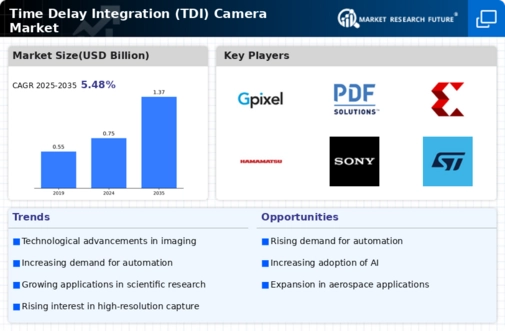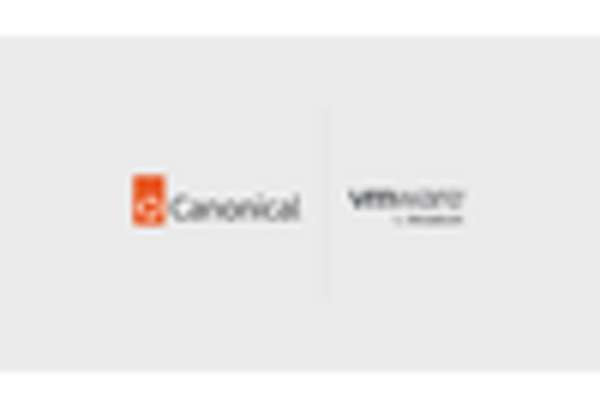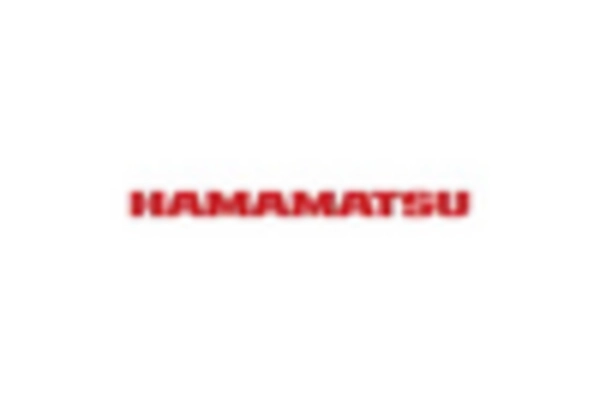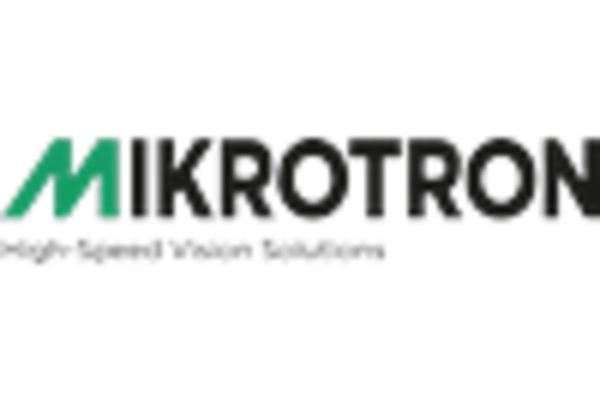Rising Demand in Scientific Research
The Time Delay Integration (TDI) Camera Market is experiencing a notable increase in demand driven by advancements in scientific research. Researchers require high-resolution imaging capabilities for various applications, including astronomy, biology, and materials science. TDI cameras, known for their ability to capture high-quality images with minimal motion blur, are becoming essential tools in laboratories and research institutions. The market for TDI cameras in scientific research is projected to grow significantly, with estimates suggesting a compound annual growth rate of around 8% over the next five years. This growth is attributed to the need for precise measurements and detailed imaging in experimental setups, which TDI cameras can provide effectively.
Expansion in Security and Surveillance
The Time Delay Integration (TDI) Camera Market is witnessing a surge in applications within the security and surveillance sector. As security concerns escalate globally, there is a growing need for advanced imaging solutions that can operate effectively in low-light conditions. TDI cameras, with their superior sensitivity and dynamic range, are increasingly being integrated into surveillance systems. The market for TDI cameras in this sector is expected to expand, with projections indicating a growth rate of approximately 10% annually. This trend is driven by the demand for enhanced security measures in urban areas, critical infrastructure, and public spaces, where TDI cameras can provide reliable and high-quality imaging.
Emerging Applications in Medical Imaging
The Time Delay Integration (TDI) Camera Market is expanding into the medical imaging field, where the demand for high-resolution imaging is critical. TDI cameras are increasingly utilized in applications such as endoscopy, microscopy, and diagnostic imaging, where capturing detailed images is essential for accurate diagnosis and treatment planning. The market for TDI cameras in medical imaging is projected to grow significantly, with estimates suggesting a growth rate of approximately 7% over the next few years. This growth is driven by the need for advanced imaging solutions that can provide clear and precise images, thereby improving patient outcomes and enhancing the capabilities of medical professionals.
Growing Interest in Automation and Robotics
The Time Delay Integration (TDI) Camera Market is poised for growth due to the increasing interest in automation and robotics across various sectors. TDI cameras are integral to automated systems, providing real-time imaging for quality control and process monitoring. Industries such as manufacturing and logistics are adopting TDI cameras to enhance operational efficiency and reduce errors. The market is expected to see a compound annual growth rate of around 9% as more companies recognize the benefits of integrating TDI cameras into their automated processes. This trend indicates a shift towards smarter manufacturing solutions, where TDI cameras play a crucial role in ensuring product quality and operational excellence.
Technological Innovations in Imaging Systems
The Time Delay Integration (TDI) Camera Market is benefiting from continuous technological innovations in imaging systems. Recent advancements in sensor technology, such as improved pixel sensitivity and faster readout speeds, are enhancing the performance of TDI cameras. These innovations allow for better image quality and faster processing times, making TDI cameras more appealing for various applications, including industrial inspection and medical imaging. The market is projected to grow as manufacturers invest in research and development to create next-generation TDI cameras that meet the evolving needs of users. This trend suggests a potential increase in market share for TDI cameras, particularly in sectors that demand high precision and reliability.


















Leave a Comment